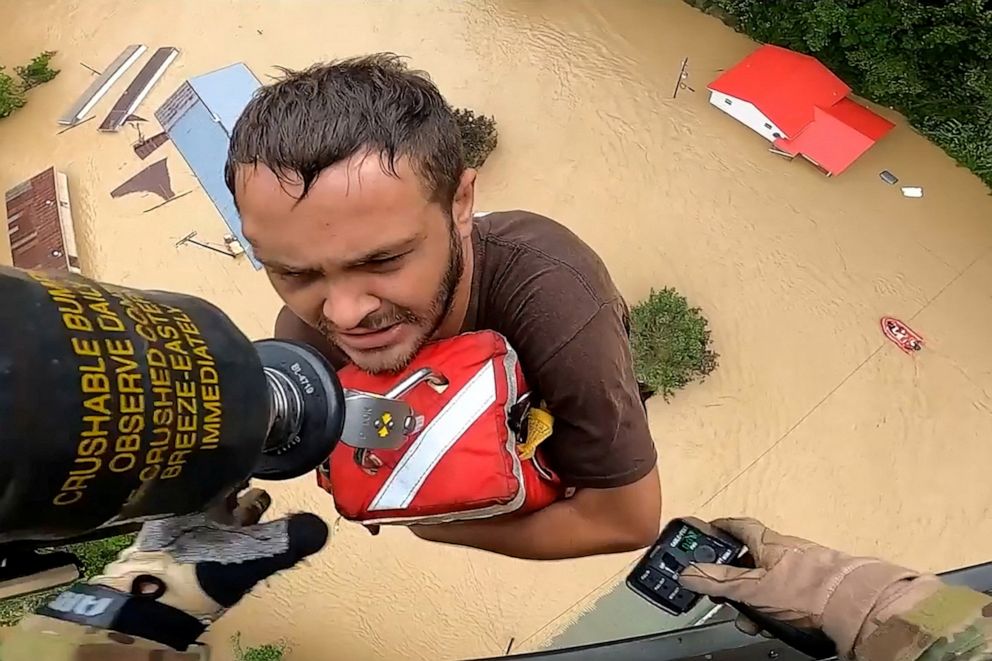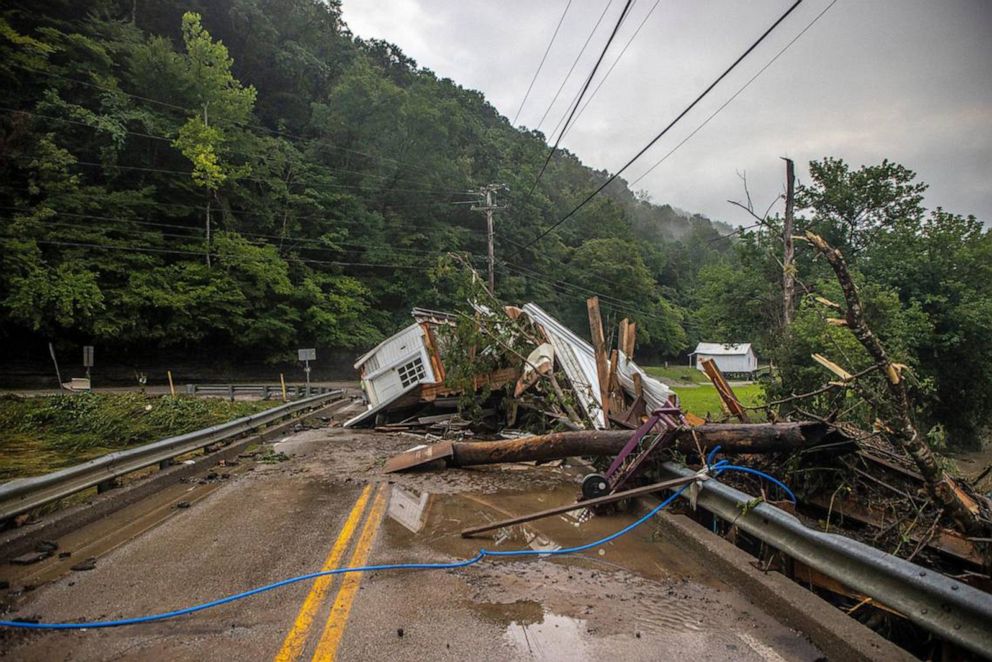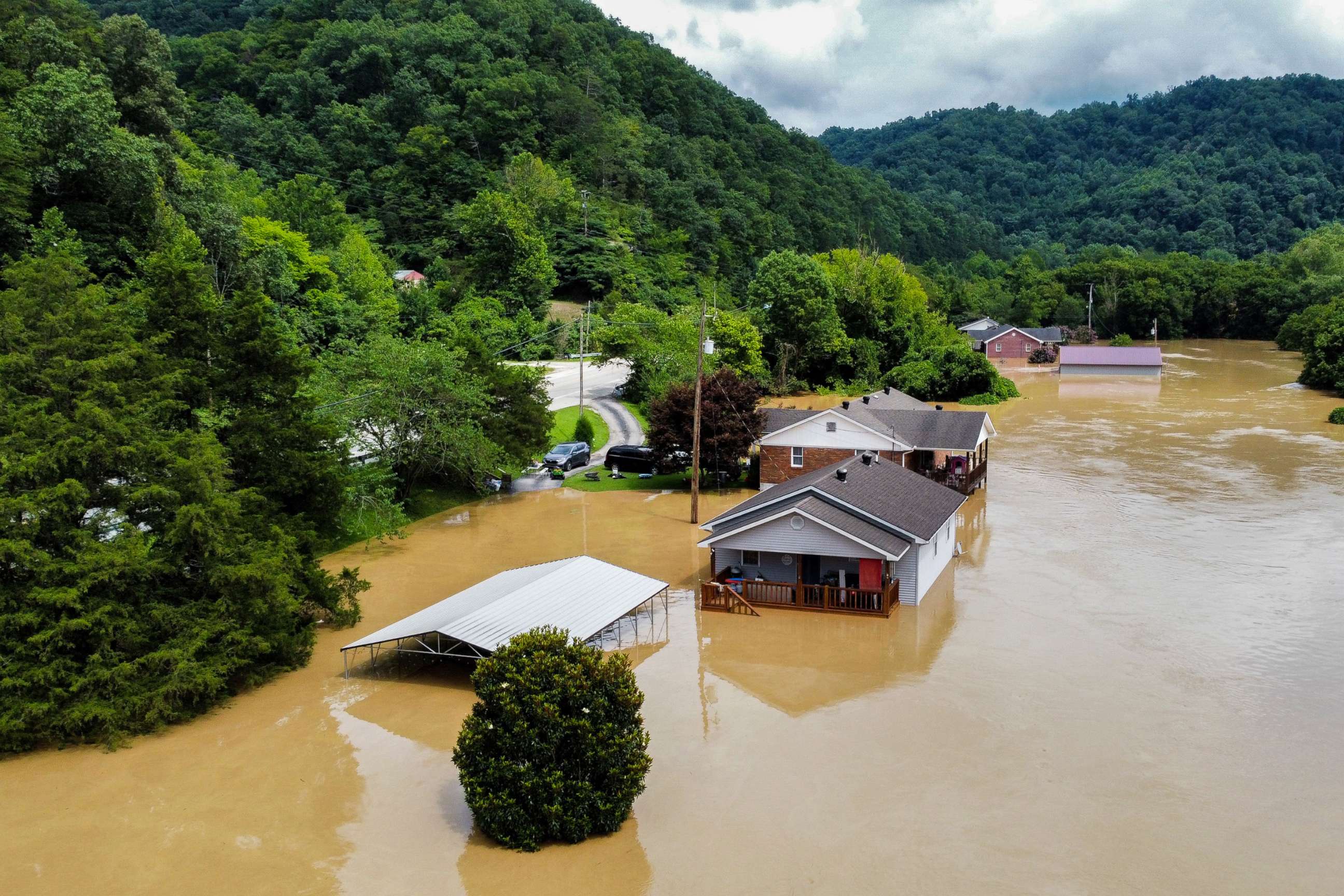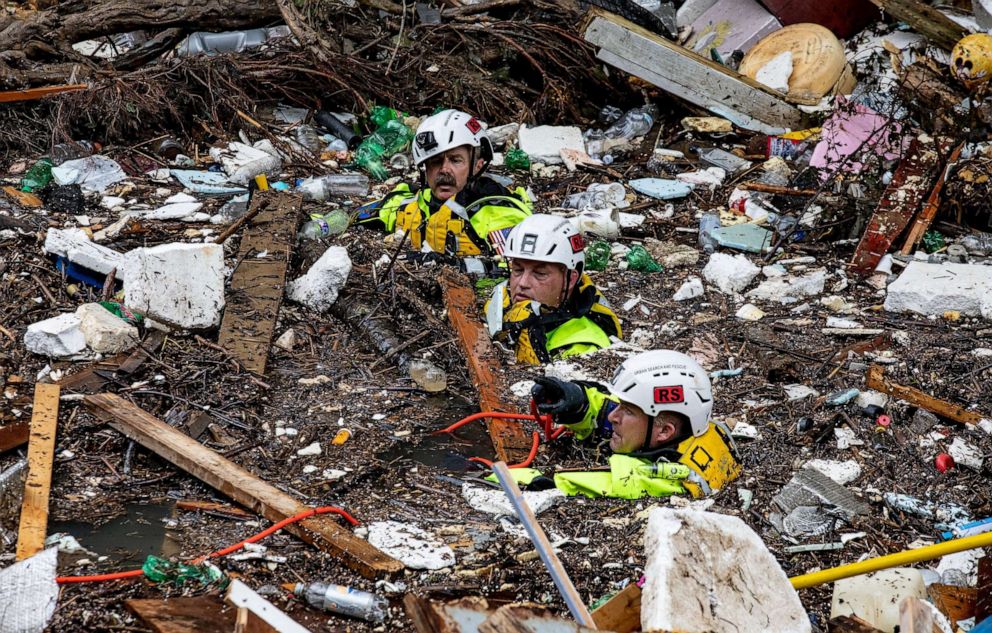Scientists explain how the deadly flooding in Kentucky got so bad: 'It was bound to be catastrophic'
Record rain combined with the region's topography was a recipe for disaster.
A repetitive meteorological event combined with the landscape in eastern Kentucky was a recipe bound for disaster, which led to dozens of deaths as a result of devastating flooding, scientists told ABC News.
A stubborn stationary front draped across the region for several days in a row, resulting in the formation of "training thunderstorms," storms that repeatedly move over the same region in a short period of time. These types of storms typically drop very heavy rain that leads to flash flooding, with rainfall rates reaching 4 inches per hour at times across the complex terrain of the Appalachia.
This system is exactly what occurred in Kentucky last week, creating the "perfect meteorological setup" for catastrophic flooding, Marshall Shepherd, director of the Atmospheric Sciences Program at the University of Georgia and former president of the American Meteorological Society, told ABC News.

The front and the copious amounts of moisture that it contained allowed the storm to move and develop in the same locations over a short period of time, Shepherd said.
Rainfall estimates so far show that 14 to 16 inches fell during a five-day period, beginning on July 27.
Most of the rainfall fell the next day -- with the excessive amounts of rain leading to major flooding along the rivers in eastern Kentucky, shattering records along the North Fork of the Kentucky River.
Preliminary stream data from the U.S. Geological Survey shows that the flow at the North Fork of the Kentucky River in Jackson, Kentucky, reached a peak that was the highest observed there in 95 years, Robert Mason, extreme hydrologic events coordinator and senior science advisor for service water for the USGS, told ABC News via email. In addition, flood flow at the North Fork of the Kentucky River at Whitesburg, Kentucky, reached the highest flow observed there in 47 years.

The topography and geology of the land in eastern Kentucky also played a significant role in exacerbating the effects of the heavy rainfall, the experts said.
The rainfall last week resulted in the biggest 24-hour event seen in the past 50 years of recording in Kentucky's Robinson Forest, Chris Barton, a professor of water hydrology and forest management at the University of Kentucky, told ABC News.
The land is steep, rugged and "very bisected," with the only flatland in the area located right at the floodplain, where the majority of the houses are because it is the only suitable flatline where people can build, Barton said. The onslaught of rushing water then flows quickly into those mountainous and valley communities.
The Robinson Forest, an old and established forest with no impervious surfaces, still could not handle the streams with multiple watersheds flowing onto the land as a result of the downpour of precipitation, Barton said. The geology of the area allows the water to move through the soil and into these ephemeral channels very quickly, which then results in a "really flashy" stream.

When Barton went to sleep the night the flooding began, he knew he would wake up to a disaster, he said. As of Monday, Robinson Forest was still a "complete mess," with no electricity or cell service, he added.
Another contributing factor to the flooding is that the engineering infrastructure for stormwater removal for many cities and towns around the country was engineered for the rainstorms of the 1970s and 1960s and prior, Shepherd said. But storms are now raining "with much more vigor and intensity" than 50 years ago, he added.
Climate change is expected to increase annual flooding costs in the U.S. by 26% to $40.6 billion, a study published earlier this year in Nature found. The cost of the additional damage will be borne disproportionately by disadvantaged communities, the study found.
At least 37 people have been confirmed dead in Kentucky, the majority of whom likely lived in impoverished communities, Shepherd said, citing research conducted at the University of Georgia that found that communities of color and poor communities tend to be disproportionately living in some of the most flood-prone areas in the country, whether in cities or in mountainous terrain.

The region in eastern Kentucky where some of the worst flooding occurred has historically served as a mining community, Barton said.
While the history of mining on the land likely did not contribute to the severity of the flood, many of the people who were displaced or suffered loss of life likely worked, at some level, either at the mines or supporting the mining industry in the area, Barton said.
The number of victims killed in the flooding is expected to grow, Kentucky Gov. Andy Beshear said on Tuesday, describing the event as the most "devastating and deadly" of his lifetime.
The flooding events are expected to increase at such a rate that what were once 1-in-100-year floods could soon be known as 1-in-30-year floods instead, Shepherd said.
"We have warned for decades now that as our climate warms, there's more water vapor available to these storms," Shepherd added.



